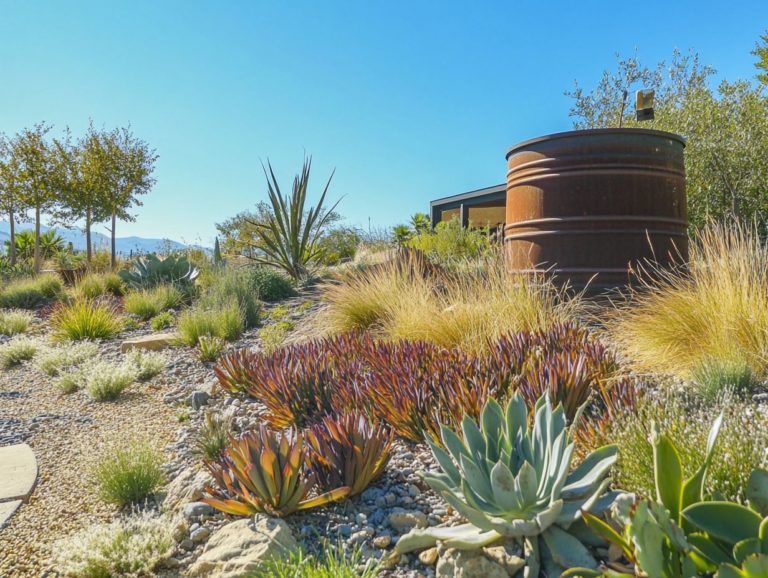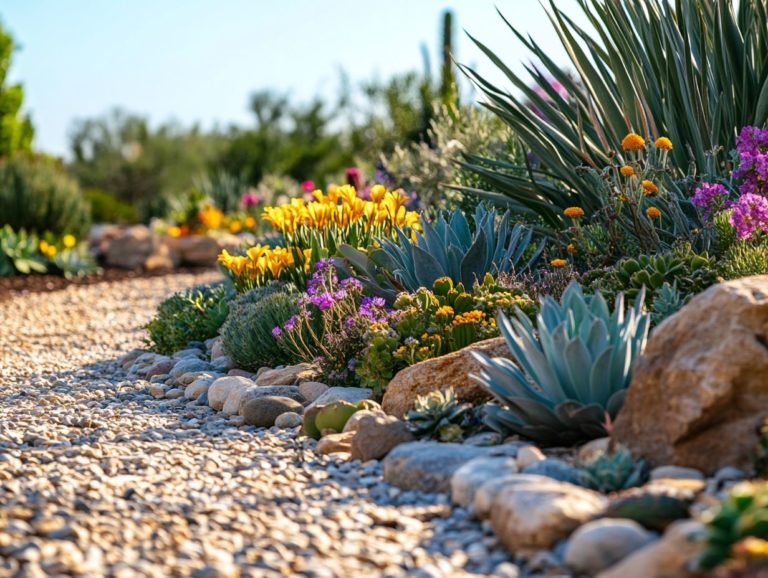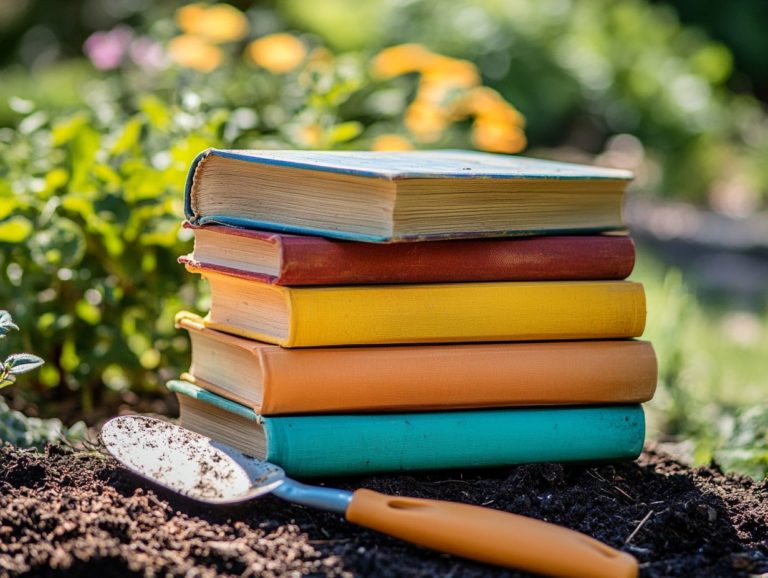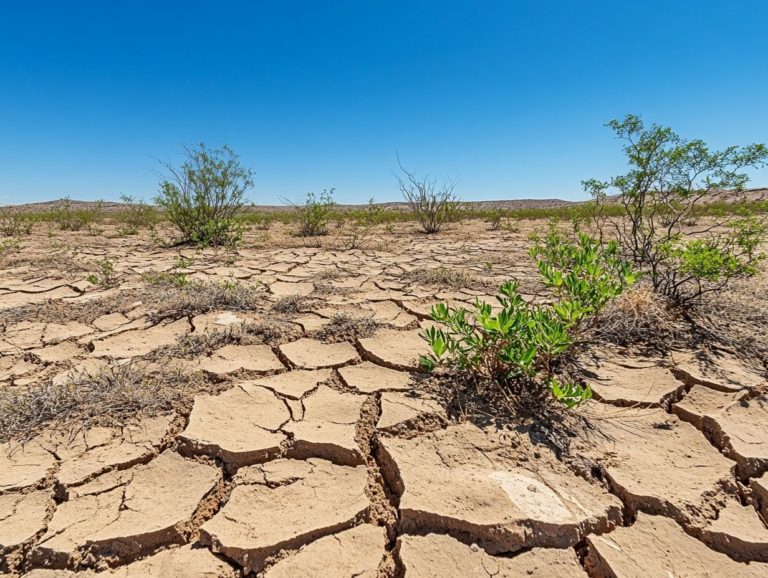Designing Pathways for Drought Landscapes
Drought has the power to dramatically reshape landscapes, influencing everything from soil health to the vitality of plants.
As climate shifts become more pronounced, grasping these effects is essential for crafting resilient outdoor spaces. Let s explore the fascinating impact of drought on ecosystems and discover how you can design stunning drought-resistant landscapes!
By selecting the right plants, particularly drought-resistant and water-wise plants, and implementing efficient irrigation systems and maintenance techniques, you’ll discover key insights that conserve water while enhancing the beauty and sustainability of your garden.
Embrace the opportunity to maximize the benefits of drought-tolerant landscapes, all while making a positive contribution to the environment.
Contents
- Key Takeaways:
- The Impact of Drought on Landscapes
- Designing Drought-Resistant Landscapes with Xeriscaping
- Creating a Water-Efficient Irrigation System
- Tips for Conserving Water
- Maintaining a Drought-Resistant Landscape
- Proper Care and Maintenance Techniques
- Maximizing the Benefits of Drought Landscapes through Sustainable Practices
- Environmental and Cost Benefits
- Frequently Asked Questions
- What are drought landscapes and why is designing pathways important?
- What factors should be considered when designing pathways for drought landscapes?
- How can pathways conserve water in drought landscapes?
- Are there any design principles to follow when creating pathways for drought landscapes?
- What are some tips for maintaining pathways in drought landscapes?
- Can pathways positively impact the environment in drought landscapes?
Key Takeaways:
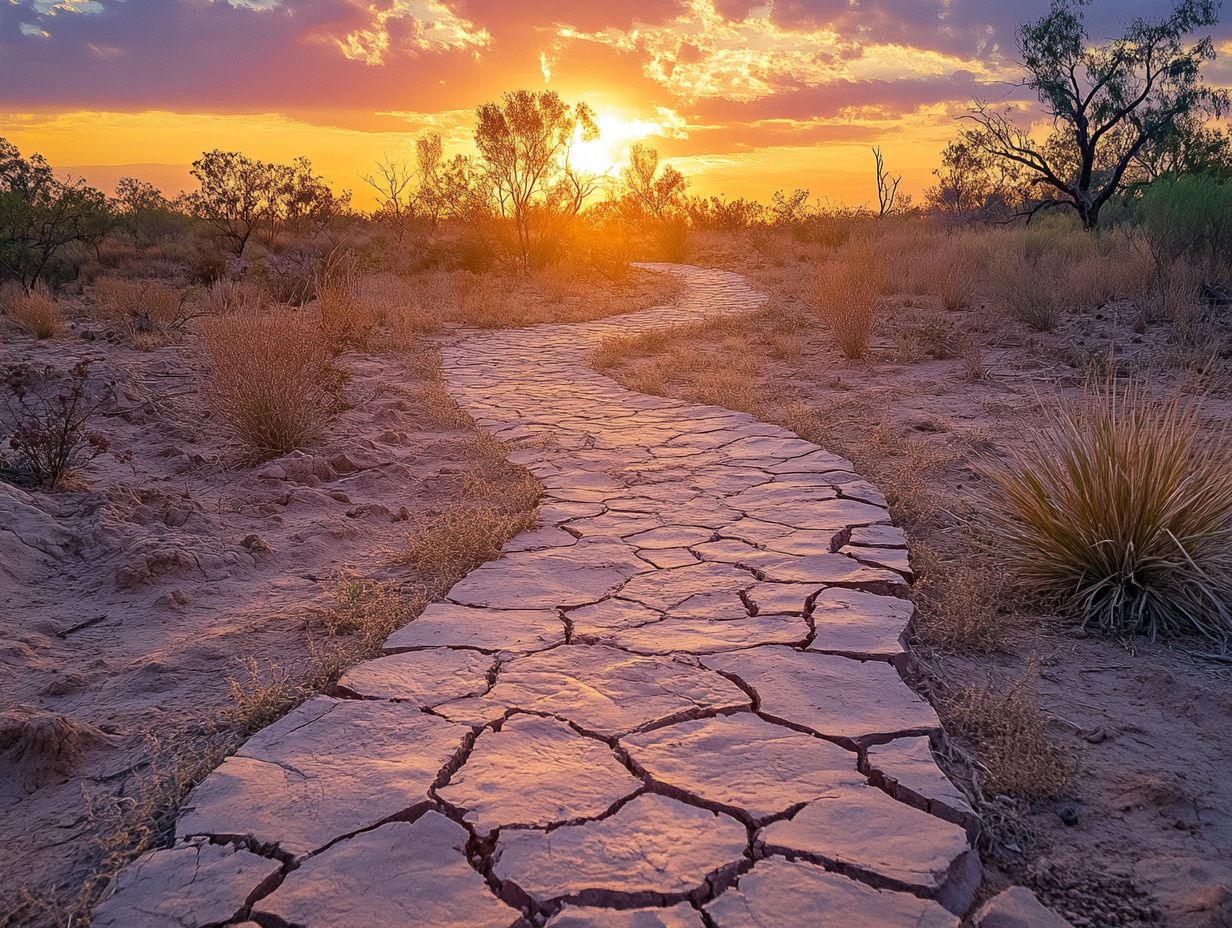
- Drought has a significant impact on landscapes, causing damage to plants and soil.
- Designing drought-resistant landscapes involves using mulch ground cover and choosing drought-tolerant plants that support local biodiversity.
- To maintain a drought-resistant landscape, use water-efficient irrigation systems and proper care techniques.
The Impact of Drought on Landscapes
Drought profoundly influences landscapes, dramatically transforming the flora and fauna that flourish within them especially in regions like California and Texas. Research from UC Berkeley shows the necessity of adopting drought-proof landscape initiatives, where drought is a common challenge.
Extended periods of inadequate rainfall can result in soil erosion and diminished biodiversity. Native plants may also disappear, highlighting the need for drought-resistant landscaping strategies and sustainable practices, including implementing greywater systems and rainwater harvesting.
Grasping these effects is essential for anyone involved in landscape design and conservation efforts. Adopting practices that promote climate adaptation is crucial, particularly when the goal is to adapt to climate challenges and maintain ecological balance.
Understanding the Effects of Drought on Plants and Soil
Understanding the effects of drought on plants and soil is crucial for your water conservation efforts and sustainable landscaping practices.
When the environment faces extended periods of low rainfall, you may encounter significant challenges in plant growth. This impacts everything from their ability to photosynthesize to their overall vitality. The composition of your soil becomes increasingly important, as insufficient moisture can make essential nutrients less available and hinder roots from absorbing what they need to survive.
This situation highlights the importance of selecting drought-resistant and native plants that are better equipped to flourish under such challenging conditions. By employing effective soil management techniques like mulching and incorporating organic matter you can significantly enhance moisture retention and support healthy ecosystems.
These practices cultivate resilience in your plant life and positively contribute to biodiversity, support innovative landscaping solutions, and foster climate adaptation.
Designing Drought-Resistant Landscapes with Xeriscaping
Designing drought-resistant landscapes is an elegant strategy that invites you to embrace native plants, implement xeriscaping (a landscaping method that conserves water), and adopt sustainable landscaping practices, including integrating drought plants into landscapes and water-efficient irrigation techniques.
This approach allows you to cultivate an eco-friendly garden that flourishes in arid conditions, transforming your outdoor space into a resilient and vibrant oasis.
Key Principles and Strategies
Key principles and strategies are vital for creating a drought-resistant landscape. This landscape should be both sustainable and visually appealing, utilizing techniques like greywater reuse and drip irrigation.
By concentrating on foundational elements like soil management, you can enhance water retention and nutrient availability. This ultimately fosters healthier plant growth. Employing efficient irrigation techniques, such as drip systems, minimizes water waste while ensuring your plants receive the hydration they need.
Choosing native and drought-tolerant species not only elevates the aesthetic appeal of your garden but also reduces resource consumption. Incorporating mulching practices helps retain moisture, suppress weeds, and protect the soil ecosystem.
By embracing these strategies, you ll create a vibrant garden that thrives with life, making a meaningful impact on your environment while reaping the rewards of lush greenery.
Choosing Drought-Tolerant Plants
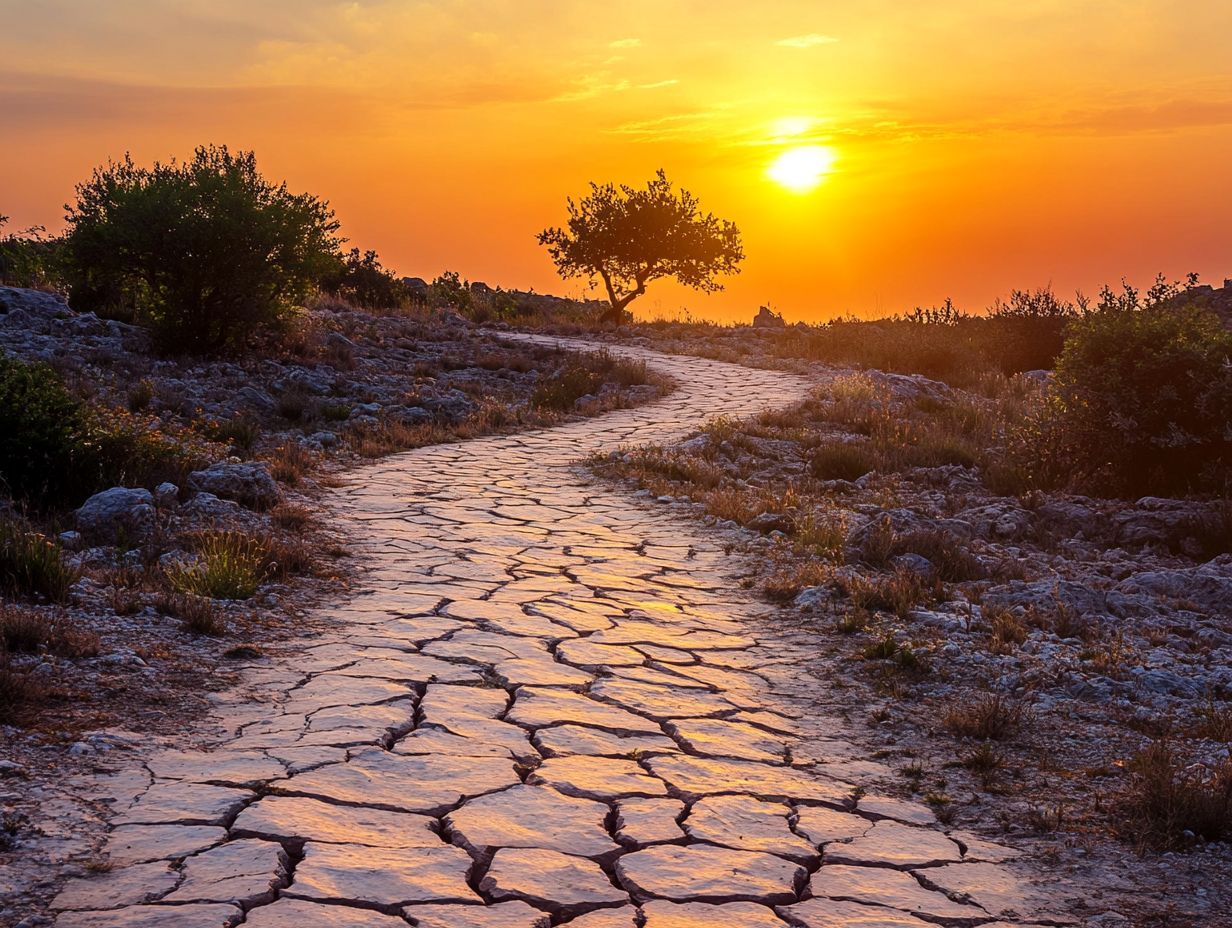
Choosing drought-tolerant plants is essential for crafting a resilient landscape. This approach minimizes water consumption while enriching biodiversity. These remarkable plants not only flourish in arid climates but also play a pivotal role in conserving precious water resources and supporting local wildlife.
In regions like California and Texas, selecting the perfect combination can elevate an ordinary garden into a breathtaking oasis. By incorporating native species such as succulents, ornamental grasses, and flowering perennials, you introduce vibrant colors and textures. Their deep root systems work tirelessly to retain soil moisture.
Group these resilient varieties together to cultivate microenvironments that promote moisture retention. This thoughtful arrangement leads to a visually stunning and sustainable garden that demands less maintenance and irrigation, allowing you to enjoy your outdoor space with minimal effort.
Creating a Water-Efficient Irrigation System
Establishing a water-efficient irrigation system, including components like rain barrels and cisterns, is crucial for conserving precious water resources while effectively hydrating drought-resistant landscapes.
Use innovative techniques like drip irrigation, rainwater harvesting, and greywater systems to revolutionize your watering routine. These methods have a significant impact on sustainable water management.
Types of Irrigation Systems
You have a variety of irrigation systems at your disposal that can effectively conserve water while nurturing drought-resistant landscapes. Options like drip irrigation, rainwater harvesting, and greywater systems stand out as practical solutions.
These systems optimize your water usage and enhance the health of your gardens. Take drip irrigation, for instance it delivers water directly to the roots of your plants, significantly minimizing evaporation and runoff. This makes it particularly advantageous for arid regions.
Rainwater harvesting is another excellent choice, as it allows you to collect and store rainfall for later use. This practice reduces your reliance on municipal water sources and encourages sustainability in urban environments.
Meanwhile, greywater systems offer a clever way to recycle water from sinks or showers for irrigation, transforming what would be waste into a valuable resource for your eco-friendly garden.
Each of these methods presents unique advantages tailored to different environments and landscape needs, reflecting your commitment to eco-friendly practices.
Tips for Conserving Water
Implementing effective tips for conserving water, such as adjusting your irrigation techniques and using mulch ground cover, is crucial for maintaining a vibrant, drought-resistant landscape while embracing your role as a responsible gardener.
Integrating these strategies not only benefits the environment but also helps you cut long-term maintenance costs.
For instance, using mulch as ground cover significantly aids in retaining soil moisture, minimizing evaporation, and keeping those pesky weeds at bay.
In terms of watering, employing deep watering techniques encourages roots to grow deeper, making your plants more resilient during dry spells.
Adjusting your irrigation practices seasonally ensures that water is applied efficiently, tailored to the changing climate needs, and prevents wastage.
Adopting these simple techniques fosters a sustainable approach to landscaping that contributes to a greener future.
Maintaining a Drought-Resistant Landscape
Maintaining a drought-resistant landscape requires a comprehensive strategy that emphasizes garden upkeep, effective soil management, and innovative techniques for drought landscaping to enhance moisture retention.
This thoughtful approach ensures the long-term sustainability of your outdoor space.
Proper Care and Maintenance Techniques
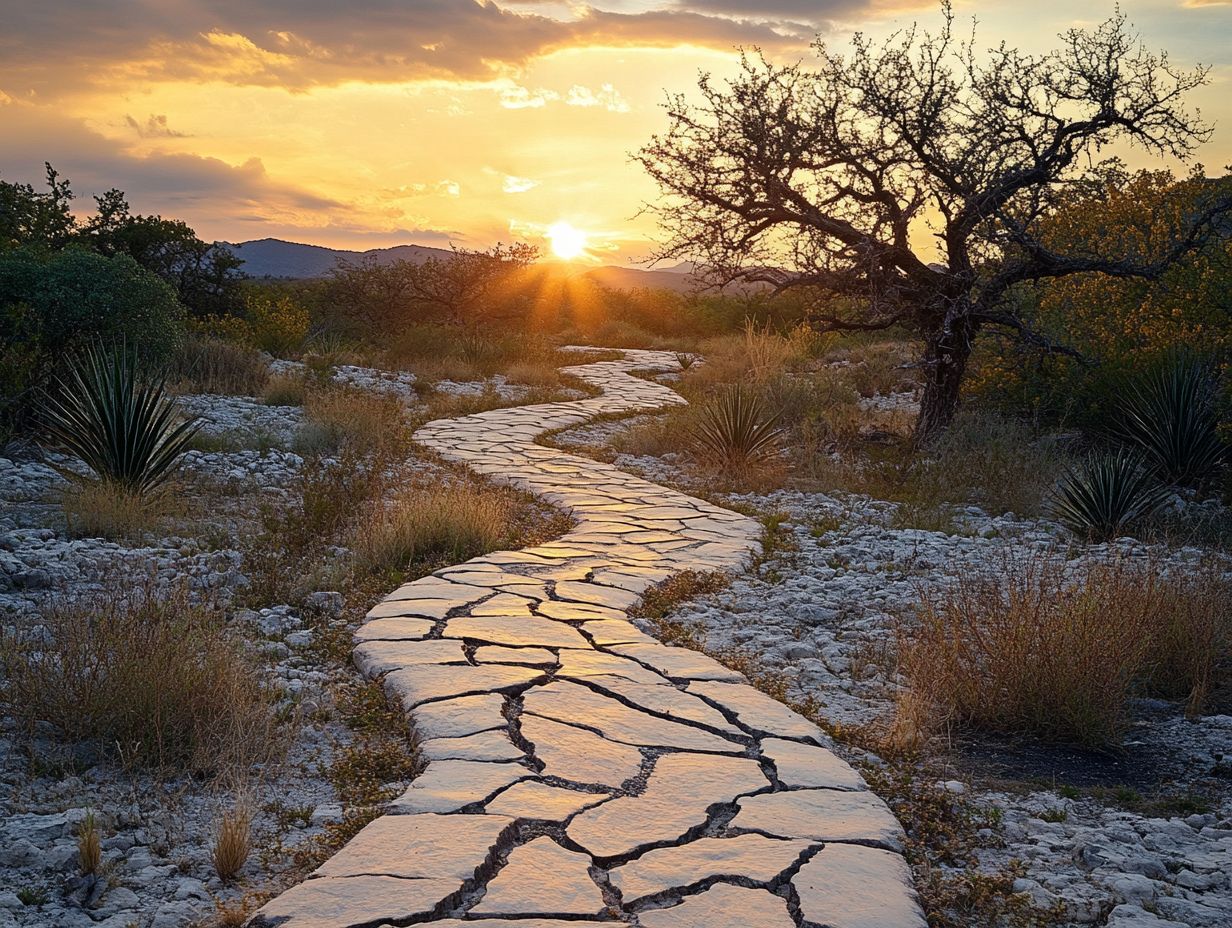
Proper care and maintenance techniques, such as deep watering and organic mulch application, are essential for sustaining the health and beauty of your drought-resistant landscape.
There is a strong emphasis on soil management and moisture retention.
Applying organic mulch is a highly effective strategy that can significantly enhance soil health as it enriches the earth through decomposition.
This practice also helps retain moisture during dry spells, minimizes weeds, and fosters a more vibrant ecosystem.
Supporting beneficial microorganisms that thrive in your garden is another advantage.
Engaging in regular maintenance tasks, such as pruning and seasonal clean-up, elevates the overall aesthetics of your landscape.
By being attentive to your garden’s needs, you can cultivate a resilient environment that flourishes even in challenging conditions.
Maximizing the Benefits of Drought Landscapes through Sustainable Practices
Maximizing the benefits of drought landscapes offers you a wealth of environmental and economic advantages.
By embracing these landscapes, you contribute to water conservation and foster increased biodiversity, all while enhancing climate resilience.
Environmental and Cost Benefits
The environmental and cost benefits of drought-resistant landscapes are truly remarkable.
These landscapes offer substantial savings in water usage while fostering biodiversity and enhancing climate resilience.
By embracing xeriscaping principles, which is a landscaping method that reduces the need for irrigation, you can reduce your water consumption by up to 50% compared to traditional landscapes.
Take Denver, Colorado, as an inspiring example it has achieved notable success with its drought-tolerant gardens, resulting in a 30% decrease in residential water use since launching the initiative.
This approach not only conserves precious water resources but also nurtures diverse ecosystems by promoting native plants that attract beneficial insects and wildlife.
Studies show that these landscapes can improve soil health and lessen the need for chemical fertilizers.
Shifting towards drought-resistant practices represents both an ecological and financial triumph for urban planners and homeowners alike.
Frequently Asked Questions
What are drought landscapes and why is designing pathways important?
Drought landscapes are areas that experience dry conditions for extended periods of time, making it challenging for plants to thrive. Exploring the future of drought-resistant landscaping can provide innovative solutions for these environments.
Designing pathways in these landscapes is important because it helps conserve water and creates a sustainable environment, as outlined in designing a family-friendly drought landscape for plants to grow.
What factors should be considered when designing pathways for drought landscapes?
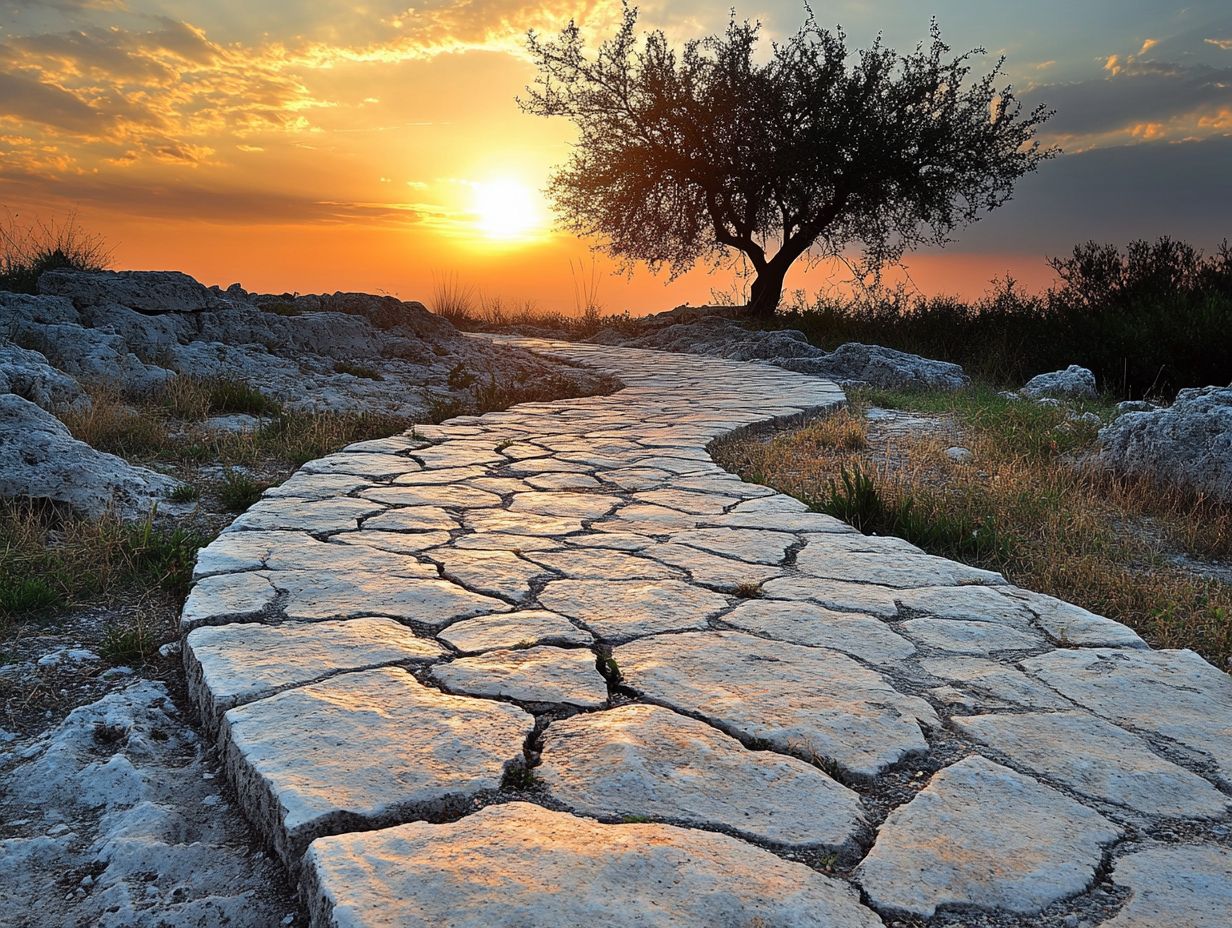
When designing pathways for drought landscapes, consider the type of soil, rainfall amounts, and suitable plants. For more detailed guidance, check out how to design a drought-tolerant landscape. This ensures your pathways thrive in dry conditions.
How can pathways conserve water in drought landscapes?
Design pathways using materials that let water seep into the ground, like gravel or mulch. Incorporating plants that need less water helps as well. You can also install a drip irrigation system for better water efficiency.
Are there any design principles to follow when creating pathways for drought landscapes?
Yes! Use native plants and group those with similar water needs together. Create zones based on water availability to maximize water use.
What are some tips for maintaining pathways in drought landscapes?
Regularly check pathways for damage or erosion. Remove weeds and debris, and adjust irrigation systems as needed. Additionally, consider using native plants in drought landscapes to enhance plant health and modify the design if necessary.
Can pathways positively impact the environment in drought landscapes?
Absolutely! Design pathways with sustainable materials to promote biodiversity while reducing water usage. They can also provide habitats for pollinators and wildlife.
Start planning your eco-friendly landscape today! Transform your outdoor space with smart, water-efficient pathways inspired by the aesthetics of drought-tolerant landscapes.

